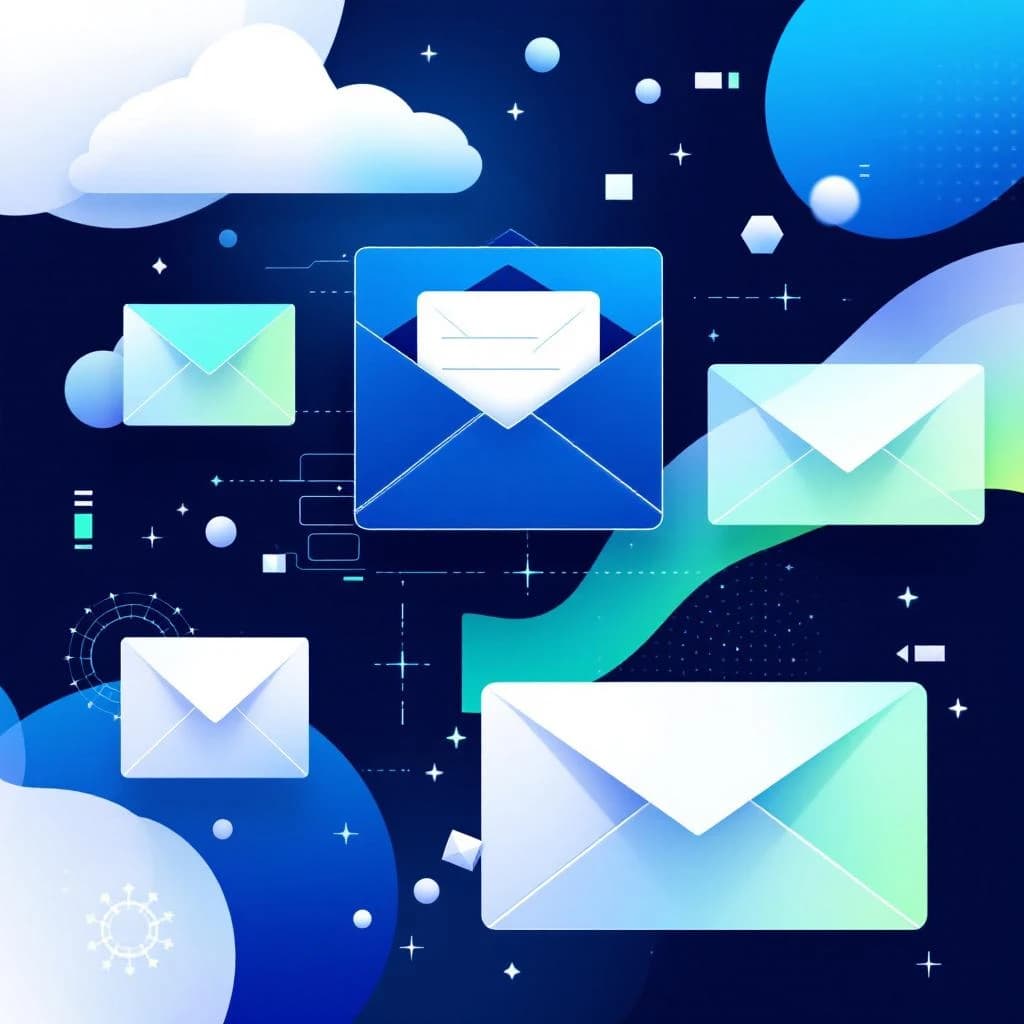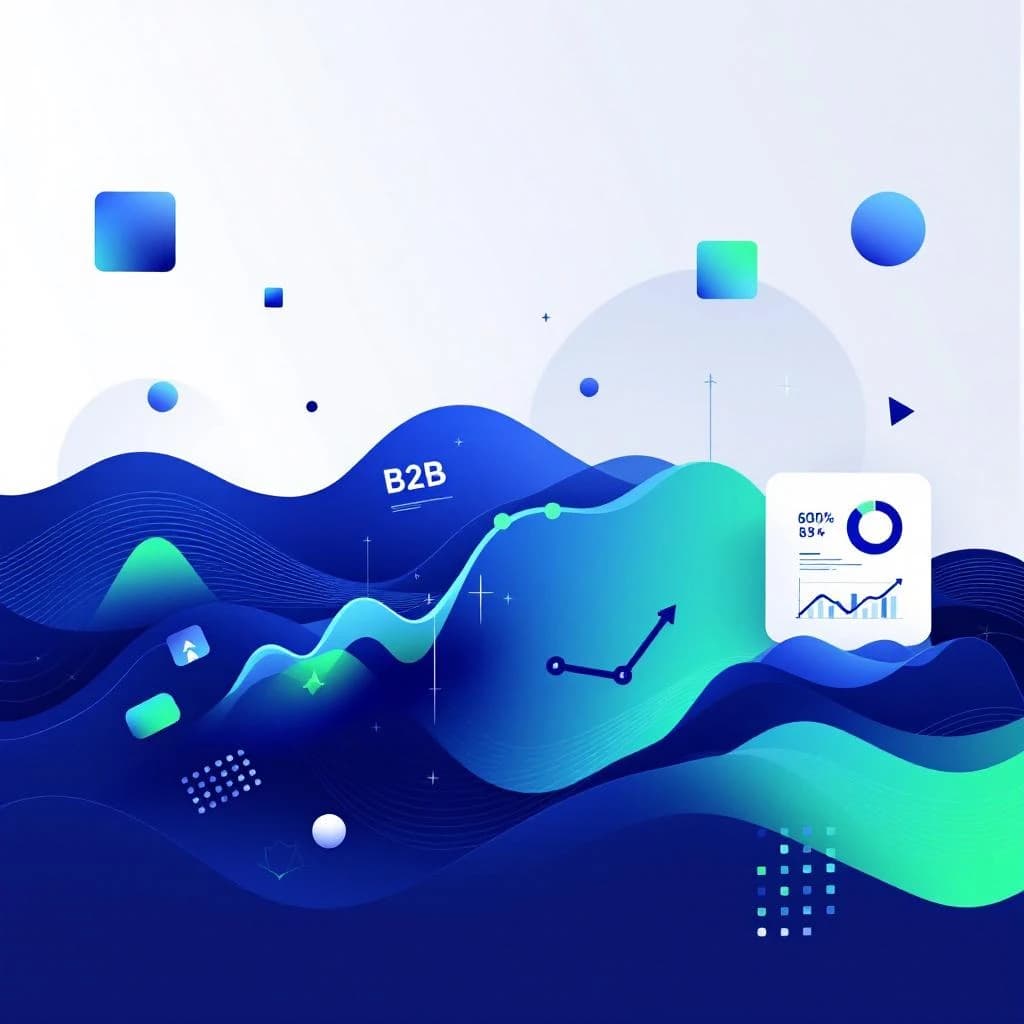What is Cold Email: Complete Guide for B2B Companies (2025)

What is Cold Email: Complete Guide for B2B Companies (2025)
Imagine reaching your ideal prospects directly in their inbox, cutting through the noise of traditional advertising to start meaningful business conversations. That's the power of cold email - and it's working better than ever for B2B companies that get it right.
While many sales tactics come and go, cold email remains a cornerstone of successful B2B go-to-market strategies. In fact, cold email is cited as the top outbound channel for 41% of B2B sales teams. But what exactly is cold email, and how can your company harness its potential?
This comprehensive guide will walk you through everything you need to know about cold email for B2B success - from fundamental definitions to advanced strategies that drive real results. You'll discover why this channel continues to deliver exceptional ROI and how to implement it effectively in your sales process.
Understanding Cold Email: Definition and Core Concepts
Cold email is a direct, outbound message sent to individuals or companies with whom the sender has no prior relationship, primarily to initiate sales conversations, partnerships, or networking opportunities. Unlike email marketing, which targets subscribers who have opted in to receive communications, cold email reaches prospects who haven't explicitly requested contact.
This distinction is crucial for B2B companies. While email marketing nurtures existing relationships, cold email creates new ones. It's your digital equivalent of knocking on doors - but with the ability to reach hundreds of prospects simultaneously while maintaining personalisation.
💡 Key Insight: Cold email differs fundamentally from spam. Legitimate cold email follows regulations, provides value, and respects recipient preferences with clear opt-out mechanisms.
The beauty of cold email lies in its directness. When done correctly, it bypasses gatekeepers, cuts through marketing noise, and lands directly in your prospect's decision-making space. This makes it particularly powerful for B2B sales cycles where building relationships with key stakeholders is essential.
Why Cold Email Remains Essential for B2B Success
Despite the evolution of digital marketing channels, cold email continues to deliver impressive results for B2B companies. The numbers speak for themselves: the average response rate for B2B cold emails is 8.5%, significantly higher than many other outbound channels.
What makes cold email so effective? It's scalable, cost-effective, and measurable. Unlike cold calling, which requires significant time investment per prospect, or paid advertising, which can quickly drain budgets, cold email allows you to reach hundreds of prospects with minimal incremental cost.
📊 Only 23% of B2B cold emails are opened, but those that are opened have a 14% average reply rate - highlighting the importance of both compelling subject lines and valuable content.
The channel also offers unmatched targeting precision. Modern cold email strategies leverage detailed buyer personas, intent data, and sophisticated segmentation to ensure messages reach the right people at the right time. This targeted approach is why successful B2B companies continue to invest heavily in cold email capabilities.
For growing companies, cold email provides predictable pipeline generation. Unlike inbound marketing, which can take months to gain momentum, a well-executed cold email campaign can generate qualified leads within weeks.
The Personalisation Revolution: Modern Cold Email Best Practices
The days of generic, mass-blast cold emails are over. Today's successful cold email campaigns are built on deep personalisation and relevance. Personalised cold emails achieve up to 32.7% higher reply rates compared to non-personalised messages, making personalisation not just nice-to-have, but essential.
Modern personalisation goes beyond inserting a prospect's name and company. It requires understanding their business challenges, industry trends, recent company news, and specific pain points. This level of research takes time but delivers exponentially better results.
Research-Driven Personalisation Framework
- Company Intelligence: Recent funding, leadership changes, expansion news
- Role-Specific Challenges: Pain points unique to their position
- Industry Context: Trends affecting their sector
- Mutual Connections: Shared contacts or experiences
- Content Engagement: Their interaction with relevant content
⚡ Pro Tip: Spend 5-10 minutes researching each high-value prospect. The investment in research time pays dividends in response rates and meeting quality.
The most effective cold emails feel like they could only have been written for that specific prospect. They reference specific challenges, mention relevant industry developments, or connect to recent company milestones. This approach transforms cold outreach from interruption to valuable business communication.
Targeting and Segmentation: Precision Over Volume
Successful cold email campaigns start with laser-focused targeting. The shift from spray-and-pray tactics to precision targeting has revolutionised cold email effectiveness. 68% of B2B buyers say they are more likely to respond to emails that reference a specific pain point or business challenge.
Effective targeting begins with a clearly defined Ideal Customer Profile (ICP). This goes beyond basic demographics to include:
- Firmographic data: Company size, industry, revenue, growth stage
- Technographic data: Current tools and technology stack
- Behavioural data: Content consumption, event attendance, website activity
- Intent signals: Active research behaviour, job postings, expansion indicators
Segmentation Strategies That Work
| Segment Type | Personalisation Approach | Expected Response Rate |
|---|---|---|
| High-value accounts | Manual research + custom messaging | 15-25% |
| Mid-market prospects | Semi-automated with custom elements | 8-12% |
| Volume segments | Automated with dynamic personalisation | 3-8% |
The key is matching your outreach intensity to prospect value. Enterprise accounts warrant individual research and custom messaging, while smaller prospects can be effectively reached through intelligent automation that maintains personalisation at scale.
Automation vs Manual Outreach: Finding the Right Balance
One of the most important decisions B2B companies face is how to balance automation with manual effort in their cold email campaigns. The data shows that automated cold email campaigns can increase outreach productivity by 3x while maintaining similar response rates to manual efforts for mid-market segments.
When to Use Manual Outreach
- Enterprise accounts with deal values over £50,000
- Strategic partnerships or high-stakes relationships
- Complex sales cycles requiring nuanced messaging
- Industry-specific niches with unique requirements
When Automation Makes Sense
- Mid-market prospects with standardised pain points
- Volume plays where speed matters
- Follow-up sequences after initial manual contact
- Event-triggered outreach based on specific actions
💡 Key Insight: The most successful B2B companies use a hybrid approach - manual research and messaging for high-value accounts, intelligent automation for volume segments.
Modern automation tools allow for sophisticated personalisation at scale. They can dynamically insert company-specific information, industry trends, and role-based messaging while maintaining the feel of individually crafted emails.
Compliance and Best Practices: Staying on the Right Side of Regulations
With increasing privacy regulations and stricter email policies, compliance isn't optional - it's essential for long-term success. Understanding and following relevant regulations protects your company's reputation and ensures sustainable email deliverability.
Key Compliance Requirements
- Clear sender identification: Your name and company must be obvious
- Honest subject lines: No misleading or deceptive headers
- Physical address: Include your business address
- Opt-out mechanism: Easy unsubscribe process
- Honour opt-outs: Process unsubscribe requests promptly
GDPR Considerations for B2B
While B2B cold email has more flexibility under GDPR than B2C marketing, you still need legitimate interest justification. This means:
- Targeting business email addresses (not personal)
- Providing clear value proposition
- Respecting opt-out requests immediately
- Maintaining records of your legitimate interest assessment
⚡ Pro Tip: Always err on the side of caution with compliance. A damaged sender reputation can take months to recover and costs far more than following best practices from the start.
Crafting High-Converting Cold Emails: Structure and Psychology
The anatomy of a successful cold email follows proven psychological principles and structural elements. Every component - from subject line to call-to-action - serves a specific purpose in moving prospects towards engagement.
The AIDA Framework for Cold Email
Attention: Compelling subject line that gets opened Interest: Opening line that hooks the reader Desire: Value proposition that creates want Action: Clear, specific next step
Subject lines with 3-5 words have a 21% higher open rate in B2B cold email campaigns, proving that brevity often trumps cleverness.
High-Converting Email Structure
- Subject Line: 3-5 words, specific and intriguing
- Opening: Personal reference or relevant insight
- Problem: Acknowledge their likely challenge
- Solution: Brief value proposition
- Proof: Quick credibility element
- CTA: Specific, low-commitment ask
- Signature: Professional with contact details
📊 Email Length Matters: Keep cold emails under 150 words. Busy executives scan rather than read, so every word must earn its place.
The psychology behind effective cold emails centres on relevance and value. Prospects delete emails that feel generic or self-serving. They engage with messages that demonstrate understanding of their world and offer genuine value.
Measuring Success: KPIs and Optimisation Strategies
Successful cold email campaigns require continuous measurement and optimisation. The key is tracking metrics that matter and making data-driven improvements over time.
Essential Cold Email Metrics
| Metric | Good Performance | Optimisation Focus |
|---|---|---|
| Open Rate | 25-35% | Subject lines, sender reputation |
| Reply Rate | 8-15% | Personalisation, value proposition |
| Meeting Booked Rate | 2-5% | Call-to-action, qualification |
| Unsubscribe Rate | <0.5% | Targeting, message relevance |
A/B Testing Priorities
- Subject lines: Test length, personalisation, and urgency
- Opening lines: Compare personal references vs industry insights
- Value propositions: Test different benefit framings
- Call-to-actions: Vary specificity and commitment level
- Send timing: Experiment with days and times
⚡ Pro Tip: Test one element at a time with statistically significant sample sizes. Small improvements compound over time to deliver dramatically better results.
The most successful B2B companies treat cold email as a continuous optimisation process rather than a set-and-forget campaign. Regular analysis and refinement separate good campaigns from great ones.
Key Takeaways
- Cold email is direct outreach to prospects with no prior relationship, distinct from email marketing to opted-in subscribers
- Personalisation is non-negotiable, with personalised emails achieving 32.7% higher reply rates than generic messages
- Precision targeting based on Ideal Customer Profile delivers better results than volume-based approaches
- Hybrid automation strategies balance efficiency with personalisation for different prospect segments
- Compliance with privacy regulations and email best practices protects sender reputation and ensures deliverability
- Successful cold email follows proven structural frameworks and psychological principles
- Continuous measurement and optimisation are essential for long-term campaign success
Conclusion
Cold email remains one of the most powerful tools in the B2B sales arsenal when executed with precision and strategy. The key is moving beyond outdated mass-email tactics to embrace personalisation, targeting, and value-driven messaging that resonates with today's buyers.
Success requires understanding what cold email truly is - not spam or interruption marketing, but strategic business communication designed to create valuable connections. Companies that master this distinction, combined with proper targeting and compelling messaging, will continue to see exceptional results from their cold email efforts.
If you're looking to build predictable pipeline and scale your GTM execution through data-driven cold email strategies, ProspectX can help. We deliver elite execution that transforms cold outreach into a reliable revenue engine, helping B2B companies book qualified meetings and accelerate growth.
Ready to Build Predictable Pipeline?
ProspectX delivers elite GTM execution through data-driven strategies. We handle everything from ICP research to qualified meetings in your target markets—helping you scale with precision.


